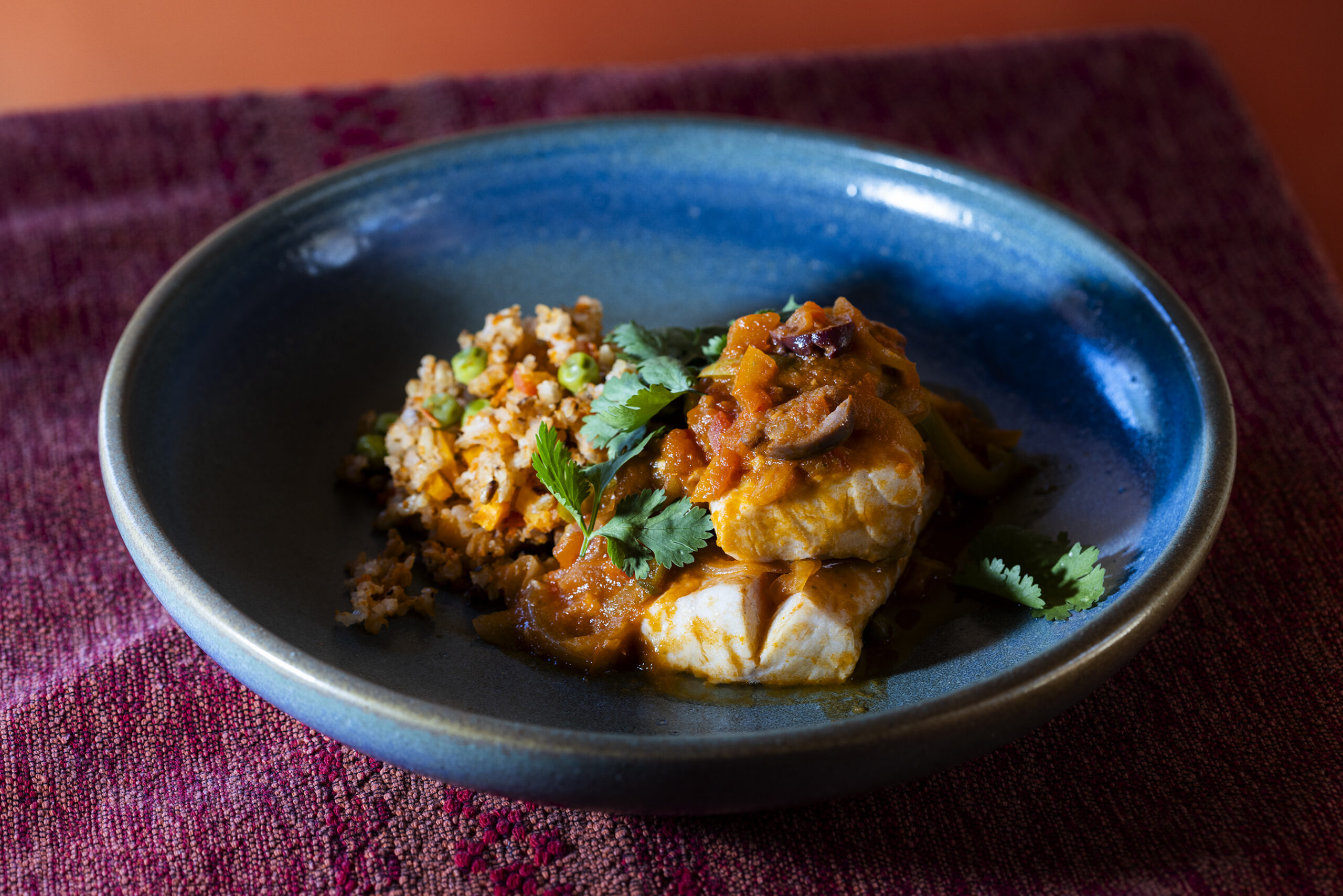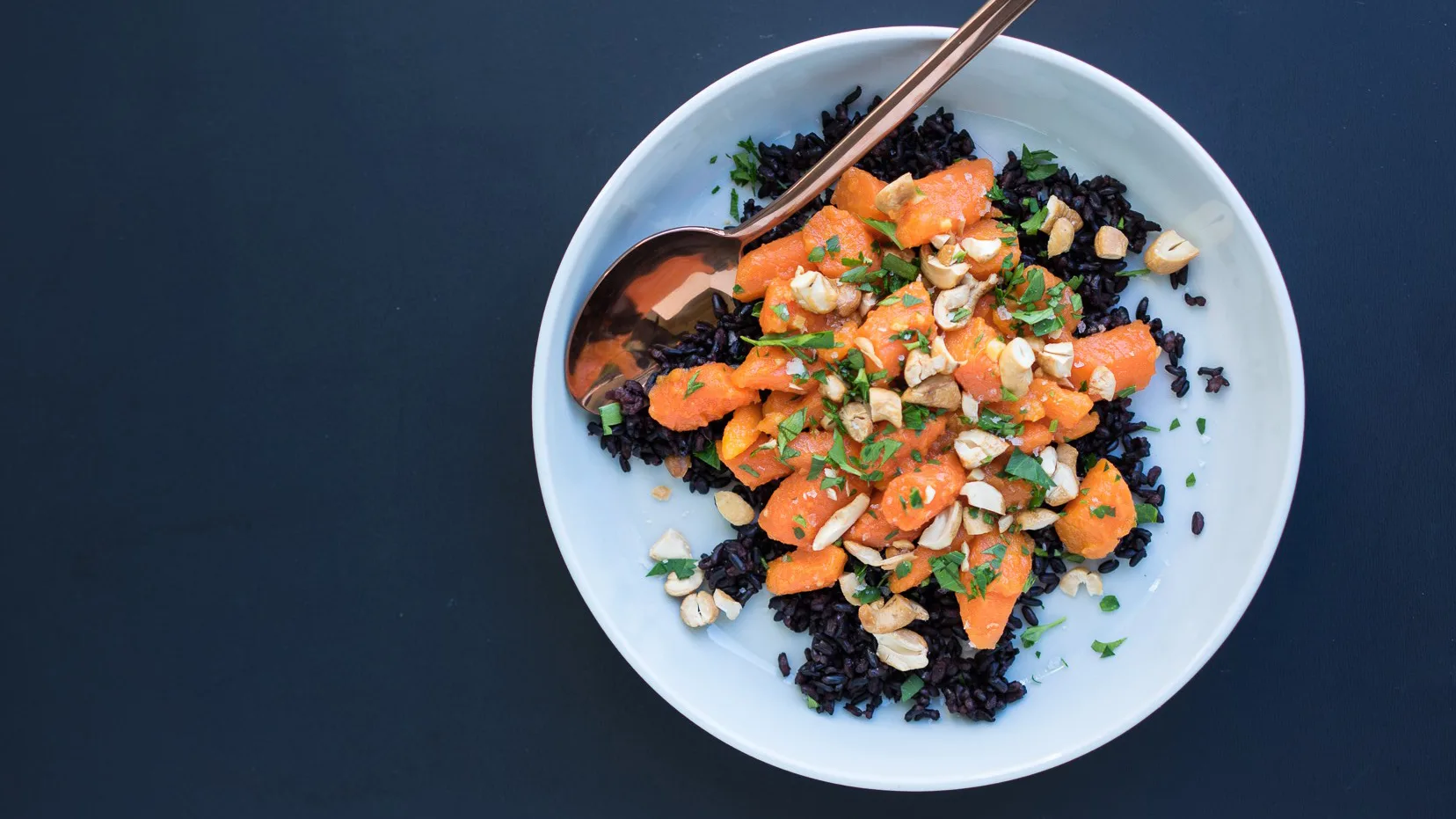Discover the Flavors of History: Fish a la Veracruzana Recipe

Fish a la Veracruzana is a classic Mexican recipe that beautifully showcases the culinary fusion of indigenous and Spanish influences. Originating from the vibrant coastal state of Veracruz, this dish pairs local white fish, such as snapper, with a tangy and flavorful sauce made from tomatoes, olives, capers, and a blend of aromatic spices.
Each bite is a journey through the rich history and diverse cultural heritage of Veracruz, where centuries of tradition and innovation come together on the plate. Enoy this wonderful version from La Cocina Que Canta’s Chef Reyna Venegas.
Ingredients:
1 teaspoon olive oil
½ cup onion, small dice
3 cloves garlic, minced
1 cup green bell pepper, diced
1 jalapeño, seeded and sliced
1 tablespoon capers
¼ cup green olives, sliced
¼ cup white wine
3 medium tomatoes, small dice
1 bay leaf
1 teaspoon oregano
3 cups vegetable or fish stock or water
1 lb. local white fish
¼ cup cilantro, minced
¼ cup parsley, minced
Salt and pepper to taste
Directions:
- In a heated pan, incorporate olive oil, onions, garlic, bell pepper, jalapeño, capers, and olives. Sauté on medium heat until the onions and garlic are light golden in color.
- Add the white wine and cook until the wine has evaporated.
- Add the tomatoes, bay leaf, oregano, and vegetable or fish stock. Continue cooking on low heat.
- Prepare the fish portions, seasoning with salt and pepper.
- Immerse the fish into the sauce. Cook on low heat, covering the pan for 3-5 minutes.
- Finish by garnishing with chopped parsley and cilantro. Serve hot with fresh handmade corn tortillas.
Origins and Historical Context
Veracruz, a vibrant state nestled along Mexico’s Gulf Coast, has long been a crossroads of cultures due to its pivotal role as a major port city. Its shores were among the first in the Americas to greet European explorers, setting the stage for an extraordinary fusion of indigenous and European culinary traditions. This rich history of cultural exchange has infused Veracruz’s cuisine with a unique blend of flavors and ingredients, making it a true melting pot of tastes and heritage.
Cultural Influences
Spanish Influence:
The city of Veracruz, from which this dish takes its name, bears the deep imprint of Spanish colonization, which began in the early 16th century. With the arrival of Spanish explorers and settlers came an array of new ingredients—olives, capers, and white wine—that seamlessly integrated into the local culinary tapestry. These flavorful additions became the backbone of the Veracruzana sauce, transforming the region’s cuisine into a delightful blend of Old World and New World traditions.
Indigenous Ingredients:
Long before the Spanish arrived, the indigenous peoples of Veracruz had already perfected the art of cooking with the region’s bountiful produce. Tomatoes, peppers, and cilantro, staples of their diet, became the foundation of the Veracruzana sauce. These vibrant, local ingredients not only enhanced the dish but also symbolized the harmonious blend of native and European culinary practices, resulting in a sauce that is as rich in history as it is in flavor.
Traditional Preparation
Fish a la Veracruzana is a dish steeped in tradition, typically crafted with local fish caught fresh from the Gulf of Mexico, with varieties like snapper or tilapia being favorites. The heart of the dish lies in its Veracruzana sauce, a vibrant medley of bright tomatoes, briny olives, tangy capers, and a symphony of spices. This sauce, bursting with bright and bold flavors, beautifully complements the mild, flaky texture of white fish, creating a meal that is both refreshing and deeply satisfying.
Culinary Legacy
Fish a la Veracruzana is more than just a dish; it’s a celebration of Veracruz’s rich and diverse culinary heritage. This iconic recipe highlights how local ingredients and cooking techniques have evolved over centuries of cultural exchange and interaction. Today, this beloved dish is savored not only across Mexico but also around the world, serving as a delicious testament to Veracruz’s historical significance and its lasting contributions to global cuisine.


